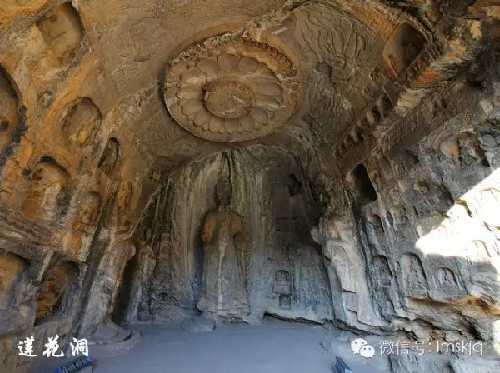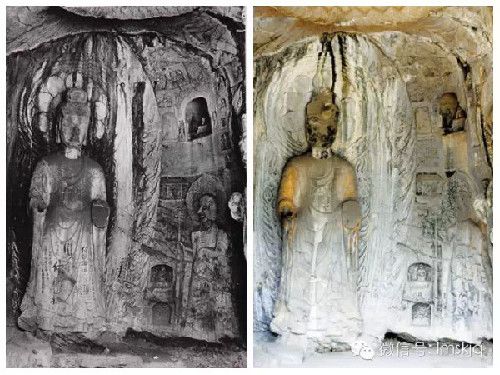A century of changes in Lotus Cave
Updated: 2015-05-22
 |
| The Lotus Cave in Longmen Grottoes [Photo/lmskjq on Wechat] |
The Lotus Cave (Lianhua Dong) in Longmen Grottoes, built during the reign of Xiaocheng (AD 525-527) in the Northern Wei Dynasty, got its name from a large lotus flower engraved on the ceiling of the grotto.
Different from the lord Buddha in other grottoes, the Sakyamuni statue in this cave is preaching in a standing position. Two of his disciples, Mahākāśyapa and Ananda, accompany him in shallow-relief.
The following is a comparison of two photos of the Lotus Cave taken over a century’s time.
 |
| A corner of Lotus Cave photographed in 1907 (left) and 2014 (right) [Photo/lmskjq on Wechat] |
The photo in the left was taken in 1907. The Buddha figures in the Lotus Cave were better preserved. There were niches of different size carved on the cave walls. Both figures of Sakyamuni and Mahākāśyapa were well-preserved, although the arms of the principal deity had been broken and there was graffiti on his body left by intruders. The head sculpture of Mahākāśyapa in the bottom-right part of the photo is believed to have the most artistic value.
The photo taken in 2014 shows that although the graffiti has been cleaned up and the sculptures are kept clean, the Sakyamuni figure’s head has been badly damaged and the one of Mahākāśyapa is totally missing. The head of Mahākāśyapa now resides in France’s Musée Guimet.






